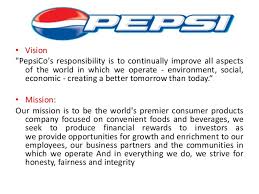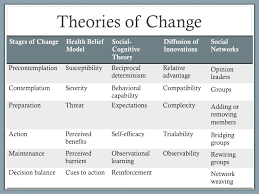
Human capital value in financial accounting
Should human capital value should be included in financial accounting
Order Instructions:
Dear Admin,
Note: To prepare for this essay please read the required articles that is attached then answer the following questions:
A perplexing issue, particularly for many human resource management and marketing professionals, is the absence of a valuation in the traditional financial statements relating to human capital and other internally generated intangible assets, such as brands. Often these value drivers of an organisation form a critical key success factor. Goodwill does appear in many financial statements and this includes intangible assets acquired by another organisation, which are often subject to large impairments losses. However, this raises questions about the sustainability and volatility relating to goodwill valuations. It is against this background that accountants have decided to be cautious in respect of recognising intangible assets in the financial statements.
To prepare for this essay:
•Consider the controversy of whether human capital should be included in the financial statements.
•Consider how human capital could be defined and quantified in financial statements.
•How do you define human capital?
•What is the importance of human capital?
•What are the reasons to measure or not measure human capital?
In an approximately 550-word response, address the following issues/questions:
With the rise of the ‘knowledge economy’, the traditional valuation of an enterprise as consisting solely of measurable assets, such as buildings, equipment and inventory, is increasingly being questioned. Human capital, although widely recognised as an important component of an enterprise’s total value, does not appear on a statement of financial position (balance sheet).
•Discuss whether or not you believe human capital should be included in the financial statements. Identify how you are defining human capital. What are some of the difficulties that may be encountered in attempting to quantify and record this (these) asset(s)? If recorded, would such values remain constant or be subject to change?
Also,
1) The answer must raise appropriate critical questions.
2) Do include all your references, as per the Harvard Referencing System,
3) Please don’t use Wikipedia web site.
4) I need examples from peer reviewed articles or researches.
5) Turnitin.com copy percentage must be 10% or less.
Note: To prepare for this essay please read the required articles that is attached
Appreciate each single moment you spend in writing my paper
Best regards
SAMPLE ANSWER
There has been much debate concerning whether human capital value should be included in financial accounting. Many professional accountants who are of the opinion that human capital should not be included in the balance sheet base their views on the limitations associated with this factor. As it is widely known, financial accounting has many limitations and there is no single aspect of it that has no complications. According to Ionel, Alina & Dumitru (2010) the limitations associated with human capital accounting, or inclusion of it in balance sheet, should not be used as a factor to eliminate human capital from the balance sheet. This view emanates from recognition of human capital as an asset in a business organization which is at times of more value than the tangible assets of an organization. What is crucial therefore, is the proper analysis of the value of the available human capital so as to come up with the right value. In consideration of human capital as an asset of an organization in the sense that it adds to productivity (in great ways than most of the other assets) it is crucial that it is included in the financial statements. Akintoye (2012) maintains that; inclusion of human capital in the balance sheet is a crucial aspect that could serve the purpose indented in the seeking the financial statements. For instance, if an investor is interested in buying stock from the organization or lending funds. Such moves would be more guided when the financial statements include the human capital values.
However, it is crucial to note that, inclusion of human capital in the financial statement is tinged with myriads of limitations. It is paramount to note that the limitations should not in any way bar accountants from including this crucial aspect in financial statement. What is crucial is to look for means of overcoming the difficulties. Corrêa Dalbem, de Lamare Bastian-Pinto & de Andrade (2014) note that; such limitations include difficulties of recognizing the value of certain human capital. This aspect may be very much limiting but utilization of some accounting baselines such as ratio comparison would shed lights in the value of a human capital ingredient. Ratios are compared with past periods, similar businesses as well as planned performance. In the case of human capital, past performance of the given personnel, the expected performance in similar business as well as the planned performance would be of much importance I gaining insight in o the value. Performance of the human capital must also be in the interest of the organization for the human capital to be recognized as of (positive) value to financial statement. This idea points to the example of directors in an organization, who although they are not the real owners of the organization, they are supposed to work for the interest of the organization like a real owner would do. The position on this should be captured in the financial statement so as to make it more guiding and meaningful.
It is crucial to note that; although human capital needs to be included in financial statement, the values do not remain constant. For instance, some personnel may add up their education level, and this brings change to the records. This is very much unlike most of the other assets included in balance sheet, but this still should not bar accountants from including it in the financial statement.
References
Akintoye, IR 2012, ‘The Relevance of Human Resource Accounting to Effective Financial Reporting’, International Journal Of Business Management & Economic Research, 3, 4, pp. 566-572, Business Source Complete, EBSCOhost, viewed 10 June 2015.
Corrêa Dalbem, M, de Lamare Bastian-Pinto, C, & de Andrade, A 2014, ‘The financial value of human capital and the challenge of retaining it’, Brazilian Business Review (English Edition), 11, 1, pp. 46-68, Business Source Complete, EBSCOhost, viewed 10 June 2015.
Ionel, V, Alina, C, & Dumitru, M 2010, ‘HUMAN RESOURCES ACCOUNTING — ACCOUNTING FOR THE MOST VALUABLE ASSET OF AN ENTERPRISE’, Annals Of The University Of Oradea, Economic Science Series, 19, 2, pp. 925-931, Business Source Complete, EBSCOhost, viewed 10 June 2015. https://ideas.repec.org/a/ora/journl/v1y2010i2p925-931.html
We can write this or a similar paper for you! Simply fill the order form!












